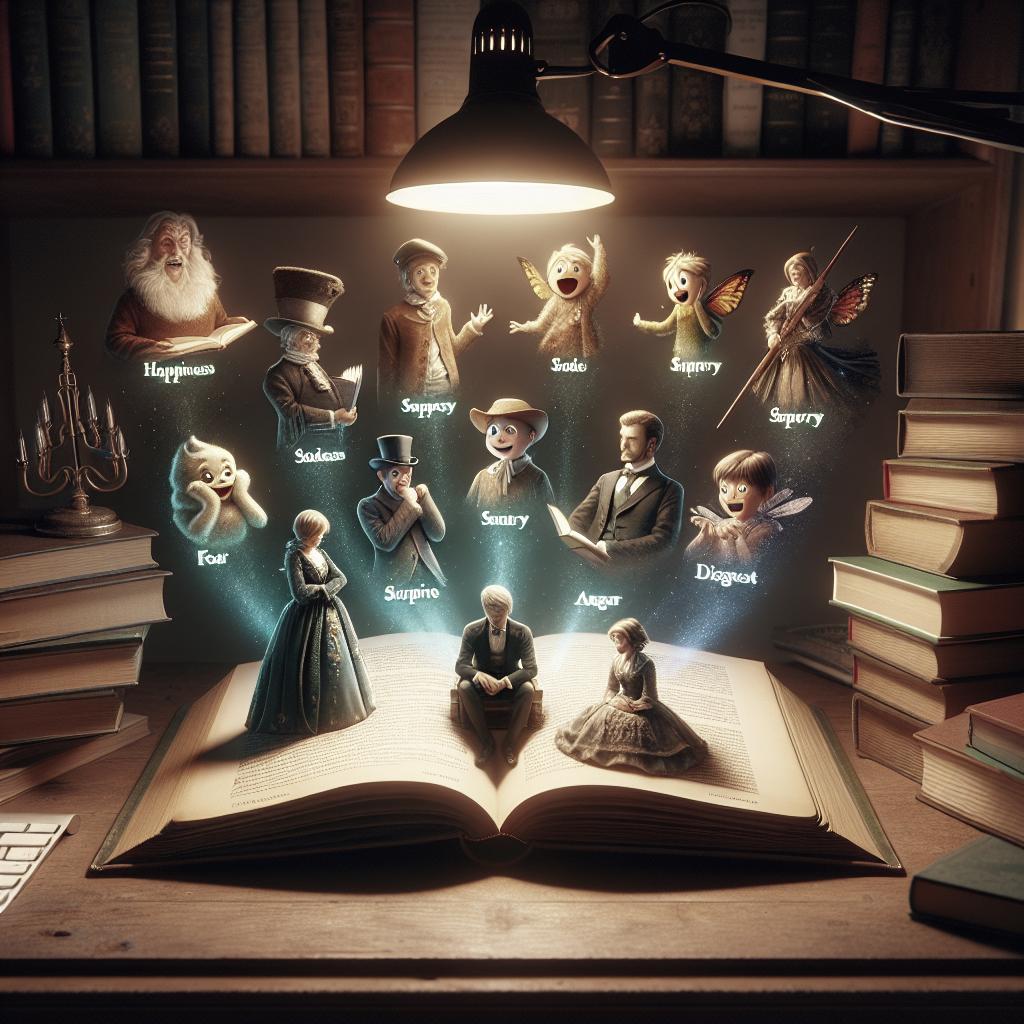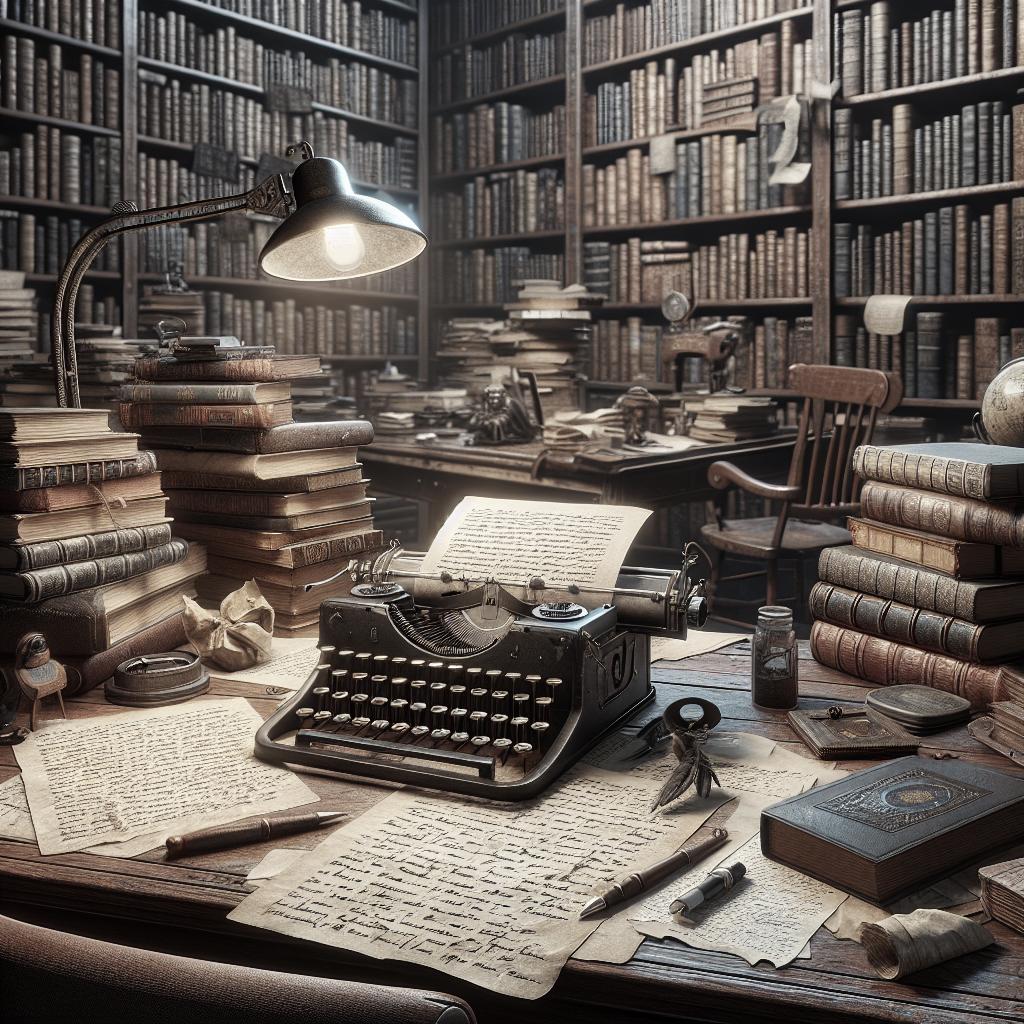In literature, mood plays a vital role in shaping the reader’s experience by influencing the emotions and atmosphere throughout the story. This post explores the concept of mood and its importance in writing, offering practical tips for creating it effectively. We examine standout examples from literature, poetry, and pop culture to illustrate how mood can transform storytelling. Additionally, we clarify the distinction between mood and tone, which often intertwine yet serve different purposes. By honing your understanding of mood, you can foster a more immersive and memorable reading and writing experience, harnessing powerful storytelling that captivates your audience. Dive into the world of mood and discover how it can enhance your narrative craft, offering you insightful guidance and inspiration to inject depth and emotion into your work. ### Mood Definition Mood in literature refers to the emotional setting enveloping the reader, crafted primarily through language, setting, and descriptive context. It’s a literary device that helps evoke specific feelings within the audience, creating a compelling atmosphere. The psychological and emotional layers of a narrative are shaped by the mood, influencing how readers perceive and emotionally connect with the storyline. A work’s mood can range from joyous or romantic to eerie or somber, and adept authors often shift mood to reflect the narrative’s evolution. This intentional construction allows writers to transport readers into the world they’ve created, engaging them deeply and enhancing the overall reading experience. The mood, alongside tone, forms the backbone of storytelling that leaves a lasting impression on the reader. ### Why Is Mood Important in Writing? #### Fully Engage the Reader Mood serves as a conduit between the reader and the story. By setting a particular emotional tone, writers can immerse the audience, making them feel part of the narrative. The right mood captivates the reader’s attention, compelling them to invest emotionally in the characters and events. Consider the suspenseful mood in a thriller; it keeps readers on the edge, prompting them to turn pages eagerly. A well-executed mood ensures that every narrative element—from characters to dialogue—resonates with authenticity. It’s this immersion that encourages readers to experience the emotional highs and lows alongside the protagonist, fostering a connection that transcends the written word. #### Create a Memorable Story Mood is instrumental in crafting stories that linger in the reader’s mind. By highlighting the narrative’s emotional landscape, mood ensures each scene contributes to the enduring essence of the tale. Consider classics like “Wuthering Heights” with its brooding, melancholic atmosphere—such examples possess a haunting beauty due to their distinctive mood. A memorable story often stems from how deeply it can emotionally affect the reader, and mood is essential to achieving this. The shadows and light mood casts across a narrative shape how readers remember the stories, making them transformative experiences rather than just temporary diversions. #### Play with or Defy Common Conventions Authors often use mood to play with or defy common literary conventions, challenging readers to view narratives from fresh perspectives. For instance, setting an upbeat mood in a traditionally somber genre could infuse originality, captivating the reader’s interest through unpredictability. Such a practice enriches the narrative, pushing boundaries that may expand traditional genre expectations. Defying conventions through mood allows writers to establish unique voices and styles. This creative freedom enables stories to break new ground, making them stand out in a saturated field and offering readers unique literary experiences. #### Enhance Other Aspects The mood can significantly enhance other storytelling elements, such as setting, character development, and plot progression. A bleak and desolate mood can amplify the tension in a dystopian setting, while a lighthearted mood can add charm to a coming-of-age narrative. By augmenting these elements, mood facilitates storytelling that encompasses both breadth and depth. Characters can become more intriguing when the mood around them changes, offering insight into their internal conflicts. Likewise, plot twists gain emotional weight when the mood aligns with or contrasts against them, thereby enriching the story’s complexity and intrigue. ### How to Create Mood in Writing: 3 Practical Tips #### 1. Pick Telling Details When Writing Descriptions To create an effective mood, attention to detail is crucial. By carefully selecting descriptions, you evoke specific emotions that guide the reader’s perception of a narrative scene. Focus on sensory details such as sound, scent, and texture—for instance, describing raindrops tapping against a windowpane can evoke a tranquil mood. The power of language lies in its ability to illustrate invisible threads of emotion connecting the character, setting, and reader. A richly described environment becomes a character in its own right, contributing to the reader’s emotional journey and engagement with the story. #### 2. Create the Right Rhythm for Your Sentences The rhythm and length of sentences play a significant role in setting the mood. Short, quick sentences can generate urgency or tension, while longer, flowing sentences might evoke calmness or introspection. Establishing the right narrative rhythm enables the writer to align the reader’s emotional metre with the underlying atmosphere. By employing varied pacing, you can influence the reader’s breathing pattern as they read, subtly synchronizing their emotional state with the story’s events. This technique allows authors to craft a mood that evolves seamlessly with the unfolding plot. #### 3. Use Imagery, Metaphor, and Simile Imagery, metaphor, and simile are powerful tools for evoking mood. These literary devices paint vivid pictures in a reader’s mind, evoking emotions tied to personal experiences and perceptions. For example, comparing a character’s grief to a withering garden creates an evocative sense of despair and loss. The use of such figurative language deepens the narrative’s emotional texture, providing layers of meaning that resonate with readers. By embedding mood within metaphor, writers invite audiences to read between the lines, fostering a richer, more immersive experience. ### Examples of Mood from Literature, Poetry, and Pop Culture #### Examples of Mood in Literature One of the notable examples of mood in literature is found in Mary Shelley’s “Frankenstein,” where the mood shifts from the serene beauty of the natural world to the dark, foreboding themes of isolation and destruction. This dissonance emphasizes the novel’s exploration of humanity’s duality. In contrast, F. Scott Fitzgerald’s “The Great Gatsby” captures a mood of nostalgia infused with the decay of the American Dream. The opulent descriptions and jazz-era vibrance subtly juxtapose underlying themes of existential disillusionment, creating a poignant narrative felt deeply by readers. #### Examples of Mood in Poetry Poetry often relies heavily on mood to convey its emotional essence. Edgar Allan Poe’s “The Raven” delivers an atmosphere of haunting melancholy and despair. The rhythmic repetition of language enhances this mood, drawing readers into the speaker’s obsessive longing and sorrow. Conversely, in Maya Angelou’s “Still I Rise,” the mood is one of defiance and resilience. Her use of powerful imagery and rhythmic lines celebrates strength and determination, embedding a sense of empowerment that resonates with readers on a profound level. #### Examples of Mood in Pop Culture In pop culture, mood is a defining feature of many iconic works. Take the eerie, suspenseful tone of “Stranger Things,” where nostalgic elements combine with supernatural horror to produce an unsettling mood that captivates audiences. Its ability to incite both fear and nostalgia demonstrates mood’s power to evoke complex emotional responses. In music, the upbeat and hopeful mood of Pharrell Williams’ “Happy” is infectious. Its bouncy rhythm and uplifting lyrics convey a universal feeling of joy and freedom, illustrating how mood transcends media formats to impact audiences globally. ### Mood vs. Tone While mood relates to the emotional atmosphere experienced by readers, tone refers to the author’s attitude toward the subject matter or audience. Tone is conveyed through word choice, sentence structure, and stylistic elements, shaping how a story is perceived. Understanding the distinction between mood and tone is crucial for writers aiming to craft nuanced narratives. While mood envelops the reader, tone directs how the reader interprets the narrative, allowing for a sophisticated interplay that can enrich storytelling with depth and subtlety. The author might employ a sarcastic tone while the overall mood remains tense or somber, adding layers of complexity and meaning to a narrative. This duality encourages readers to engage with texts on multiple levels, enhancing both enjoyment and comprehension. ### Using Mood Examples to Deepen Your Writing (& Reading) Leveraging mood effectively can deepen both writing and reading experiences, fostering stories that resonate emotionally and linger long after the final page. By observing and analyzing mood in various literary and cultural contexts, writers can gain insights into crafting compelling atmospheres. Readers, too, benefit from an awareness of mood by appreciating undercurrents of emotion that frame their interpretations and responses. As you explore and experiment with mood in your writing endeavors, consider how it complements or enhances other narrative aspects, weaving it into a dynamic storytelling tapestry. Incorporating the rich potential of mood expands creative horizons and inspires writers to innovate while remaining attuned to reader experiences. With practice, mastery over mood becomes a valuable tool in every storyteller’s arsenal. “`html
| Section | Content Summary |
|---|---|
| Mood Definition | Explains mood as the emotional setting that influences reader immersion. |
| Why Is Mood Important in Writing? | Explores mood’s role in reader engagement, story memorability, genre conventions, and narrative enhancement. |
| How to Create Mood in Writing: 3 Practical Tips | Provides tips on crafting mood through detail selection, rhythmic sentences, and figurative language. |
| Examples of Mood from Literature, Poetry, and Pop Culture | Illustrates mood in various texts and media, spanning literature, poetry, and pop culture. |
| Mood vs. Tone | Clarifies the differences and interplay between mood and tone, enhancing narrative interpretation and impact. |
| Using Mood Examples to Deepen Your Writing (& Reading) | Encourages leveraging mood for enriched storytelling and understanding of narrative emotions. |
“`


